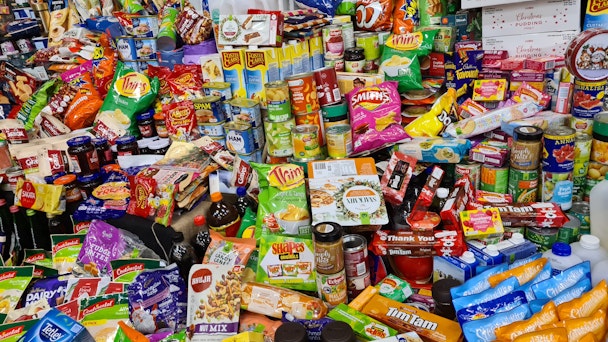Will new restrictions for FMCG brands bring back prize promotions?
FMCG brands have been hyper-focused on building new, exciting digital experiences. But is there a resurgent opportunity for prize promotions to play a part in the wider connected experience? James Willoughby, head of client services at Initials, provides marketers with some interesting findings.

Initials offer marketers tips on how to plan spend and investment for FMCG brands and drive consumer uptake.
The UK Department of Health and Social Care has confirmed plans to introduce promotional and location restrictions on high fat, salt and sugar (HFSS) products in stores.
This means it will be harder for brands to advertise products in-store, limiting flexibility around discounts and sales. Product innovation through the creation of healthier products is one option, but new strategies will be required to drive sales and inspire loyalty.
Meanwhile, new privacy restrictions regarding third-party cookies mean FMCG brands will no longer have such oversight of customer behavior online.
Severing this rich source of data has serious ramifications for FMCG brands that rely heavily on external retailers to sell their products, since many of these brands lack robust first-party data.
These fears are starting to manifest, as 41% of marketers believe their biggest challenge in 2022 will be their inability to track the right data.
Both measures, which are set to be introduced in 2022, will have serious knock-on effects for FMCG brands looking to drive loyalty and achieve cut-through at the point of purchase.
How can prize promotions solve these challenges?
From cereal box inserts to exotic holidays, the idea of a brand driving sales and engagement through prizes and rewards has been around for decades.
In today’s digital climate, prize promotions can be seen as boring and old-fashioned. Part of the problem is that lazy prize promotions have tainted the wider perception.
When done well, prize promotions not only have a short-term sales effect but can have long-term benefits too, including:
- Showcasing a brand’s proposition
- Providing a way to stand out from competition
- Aiding the negotiation of incremental in-store display at retail
- Encouraging trial
- Driving sales
- Rewarding loyalty
Research has shown that 33% of prize promotion participants are open to receiving information about a brand.
And contests have an extremely high conversion rate, 34%, which is significant when compared to other sources such as PPC with (typically) substantially lower conversion rates.
At a time when price promotions for HFSS products will be banned, prize promotions could serve as an effective way to drive sales, encourage loyalty and capture badly needed first-party data.
The art and the science of prize promotions
Isn’t it expensive to present an aspirational mechanic and prize fund?
We’re glad you asked. At Initials, we’ve spent over a decade crafting the perfect prize promotions for a variety of household brands. We recently conducted a study that surveyed respondents who had been persuaded to buy products based on promotions where they can win or get something.
The aim of the research was to reveal the psychological tipping points of prize promotions. We used a conjoint research methodology to ensure no two people were given obviously favorable options (i.e. would you rather win £100 or £1,000?).
We found two surprising insights:
- Consumers react as favorably to smaller cash-value prizes as they do to larger cash-value prizes
- Consumers react as favorably to a lower-odds chance of winning as they do higher odds
Let’s consider an example. A brand creates a promotion where the prize is valued at £5. The odds presented are that one in four consumers will win that £5 prize. Our research shows that this offer will motivate 84% of consumers to take part.
So, what happens if we keep the cash-value prize the same (i.e. £5) but decrease the odds to a one in ten chance of winning?
Surprisingly, the proportion of consumers who would take part hardly changes at all, dropping by just 5% to 79%. This swing in user participation is quite negligible when considering the amount of money a brand would save by lowering the odds so substantially.
So: lower odds don’t always mean better take up – cost savings can be comfortably considered - and higher-value prizes don’t always equate to higher participation. Neither the number of prizes nor the frequency of winning are particularly powerful. The method of entry is best kept simple but depends on the objectives of the campaign
By marrying science with creativity, FMCG brands can more accurately plan spend and investment to ensure that their prize promotions drive consumer uptake.
As new challenges force brands to think outside the box, could it be the right moment to make prize promotions cool again?
Content by The Drum Network member:

Initials
About Initials
Initials is one of the UK’s fastest growing independent creative agencies.
Experts in branding & brand development, shopper &...

